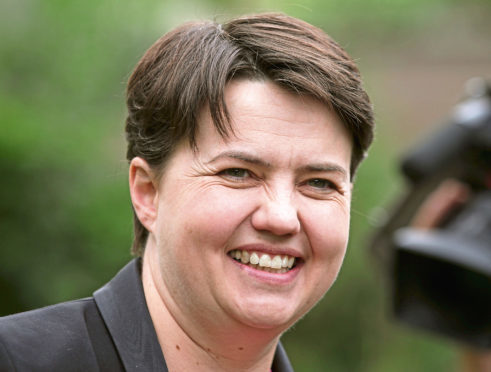The unhappiness of young girls is a tragedy and a crisis. We have created a social structure which is unduly tough on adolescents, for no obvious purpose. The young were once under pressure to find work, marry or help the family – as these old economic forces die away, so Scotland should reinvent childhood.
Two political revelations in the past week have driven this home – both Ruth Davidson and Nicola Sturgeon admitted to experiencing loneliness and bullying at school, with Davidson also speaking of self-harm and bouts of depression.
Scots once came from a culture which was tough on children. We were taught by rote, punished by habit. That culture is dying. The slap has been replaced by endless admissions of love – the generation growing up now do so in a world apart from my childhood.
Yet we still exert extraordinary pressure on the young, and girls in particular. The Royal Society of Edinburgh Foundation reported in 2017: “Compared to youth in other countries Scottish adolescents are more likely to experience drunkenness, have poor mental health (especially girls), be overweight or obese, and experience teen pregnancy.”
We may say we love much more often than we did, but we struggle to make that sentiment fact. A loving society would not result in such pain.
A survey this week from the Girl Guides reports that three out of four 11- to 21-year-olds say they know a girl who has had mental health issues. The same survey of 2,000 young girls found 27% declared themselves unhappy. Based on previous reports, the Girls Attitudes Survey states that young women are unhappier than they were a decade ago.
The occurrence of mental disorder among all women, and the young in particular, is higher than among men. A 2014 survey by the NHS in England found one in five women report common mental illness. It survey also found that mental health problems started young. One in 10 under-16s have a diagnosable mental health condition and half of all mental health problems are established by the age of 14.
“They (mess) you up, your mum and dad. They may not mean to, but they do,” wrote Philip Larkin, and this might just be the human condition. Yet the rise in cases suggests there is more at work.
We deal with this through drugs. There are targets for talking therapies in the NHS, and the Scottish Government have pledged to improve these. The experience of most people is that it takes a long time to see a therapist. The consumption of medicines to tackle mental conditions has rocketed – in England it has risen 100% in the last 10 years.
A world where the stigma of mental health has been removed – Ms Davidson and Ms Sturgeon would once have become unelectable on such revelations – and one with much better drugs is clearly a good thing. It is also a failure.
When mental health cases are on the rise, when self-harm and depression in young girls is so prevalent, a success would be a radical change in how we live.
We need to do many more and different things before we can say we have understood the reality of mental health. By continuing to put young girls under exam and social media pressure, by putting people into stressful and lonely jobs, and by creating a power system which persecutes a private life or idiosyncrasies, we are only mopping a fevered brow with drugs and NHS targets.
>> Keep up to date with the latest news with The P&J newsletter
The matter of how society responds to mental illness, and to the phenomenon of young female mental illness, is as important as Brexit or economic growth. We are all humans travelling from one darkness to the next. The most important thing is to make that journey painless and loving. On many points we have improved, but we face this phenomenon of disturbed consciousness.
If young girls are under such pressure, then why continue with the education system we have? If they are vulnerable to the pressure of exams, the digital harassment of social media, then shouldn’t we think of a schooling with less pressure, of a ban on mobile phones and social media apps?
There is no longer an economic or social need to produce 16-year-olds fit for work, so why stick to a system designed to produce cheap, young labour? When the pressures of modern employment are such, why not look to change the workplace rather than pump people full of drugs? We have 19th Century systems, built on the idea of the stoical male worker bringing home the wage packet, when we know men are just as vulnerable as women, when work needn’t be structured as it is, when education could be far more flexible and supportive.
Ms Davidson ruled herself out of ever running for the prime minister’s job, which is a pity as she is reassuringly normal compared to the male candidates. The job would threaten her mental health, she says. The problem is not with Ms Davidson, it’s with a world which has not adapted.











